British Garrison Cemetery in Kandy – mine of information By Arundathie Abeysinghe
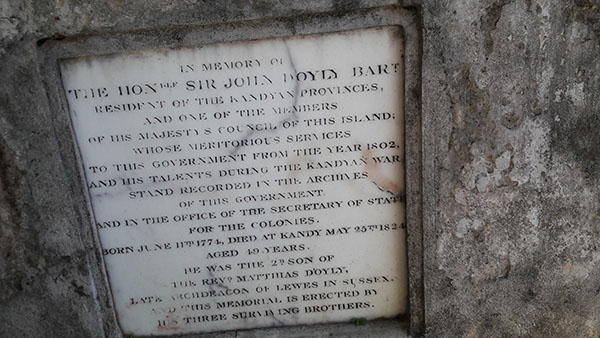

British Garrison Cemetery also known as Kandy Garrison Cemetery is a British cemetery for British nationals who died in Sri Lanka during the British Colonial Era; dedicated administrators of the British Civil Service, pioneer coffee planters who toiled hard to commence coffee plantations, their wives and children who had lived with them sharing their duties in a foreign land.
Situated a few hundred meters from the Temple of the Sacred Tooth Relic and a short walk uphill, the graveyard is visited by many foreign and local visitors daily. The Anglican graveyard renders memories of the British Colonial Era.
Under sprawling trees with a carpet of grass, the cemetery has tombs of different sizes and shapes. Although, situated within Kandy Municipal limits, the graveyard is bucolic. The cemetery has 195 graves of men, women and children and the common causes of death were malaria and cholera. To date, the cursive scripts of the majority of tombs are clearly visible, except the cursive script of the oldest tomb which is weathered and covered in lichen.
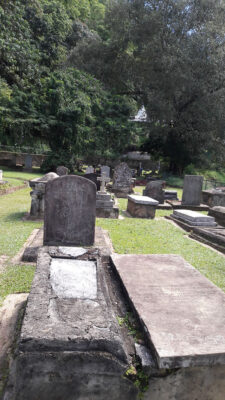
Established in 1817, immediately after the British captured the Kandyan Kingdom, British Garrison Cemetery served as the main burial grounds for British Nationals who died between 1817 -1873 in Ceylon. The cemetery was closed in 1873 as there was a ban on graveyards within the city limits and was replaced by Mahaiyawa Cemetery. Later, permission was given to bury the relatives of the dead and the last person buried there was Annie Fritz in 1951. The majority of these tombs have inscriptions.
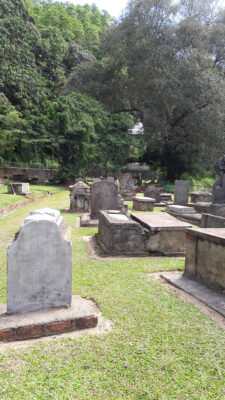
Among the tombstones, there are several prominent tombstones of remarkable people such as Sir John D’Oyly, the great diplomat who represented the British Government at the signing of the Kandyan Convention of 1815, the Convention which annexed the Kingdom of Kandy to the British Crown. He is well-known for his work on the ‘Sketch of Constitution of the Kandyan Kingdom’ and his diary from 1810 – 1815. When the last king of the Kandyan Kingdom as well as Sri Lanka, Sri Wickrama Rajasinghe (reign 1780 – 1815) was captured by the British, Sir John D’Oyly became the first resident of the Board of Commissioners that was appointed to carry out administration duties of the Kandyan Provinces. Sir John D’Oyly was decorated as a Baronet of the United Kingdom for his illustrious services. The tombstone of his grave is a fluted column. A Cambridge University graduate, he had arrived in Ceylon in 1801 at the age of 26. A scholar of Sinhala and Pali, Sir John D’Oyly had been popular among locals.
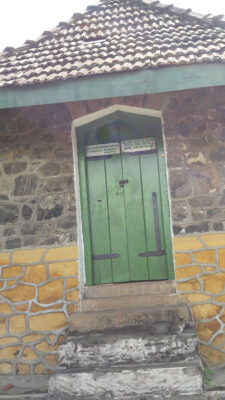
The tomb of Lady Elizabeth Gregory (1817 – 1873), wife of Rt. Honorable William Henry Gregory, Governor of Ceylon (1872 – 1877) is situated towards the end of the cemetery. The tombstone of John Spottiswood Roberston (1823 – 1856) who died at the age of 33 years by a wild elephant attack is the last recorded death of a European in Sri Lanka (former Ceylon).
Among the other prominent tombstones are those of Lieutenant General John Fraser, Colonel of the 37th Regiment of the British Colonial Era and the tomb dedicated to Oteline Rudd (1822 – 1827, her husband was one of the first planters whose lands were severely affected due to the coffee blight from 1847 – 1848). There is an emotional memorial stone for their infant sons named as “G” and “M” dated 1873. These five infants are buried side-by-side in tiny graves.
Many foreigners who visit the cemetery have their ancestors buried at the graveyard.
The cemetery has table tombs, raised tombs, obelisks, a fluted column, inscribed side tablets, mundane foot stones, each with a story of the person buried in it is a memento of the past.
The cemetery was rehabilitated with funds from the Commonwealth War Graves Commission. The graveyard is open to the public from 8.00 a.m. to 6.00 p.m. daily.
Location: Few meters uphill from the National Museum, Kandy
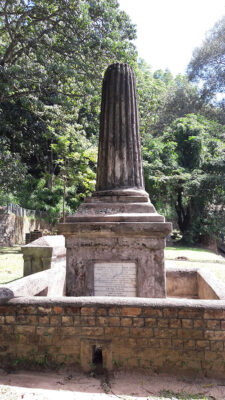








No Comments